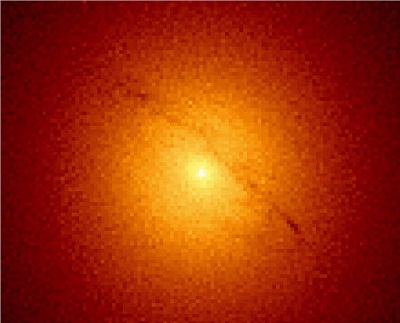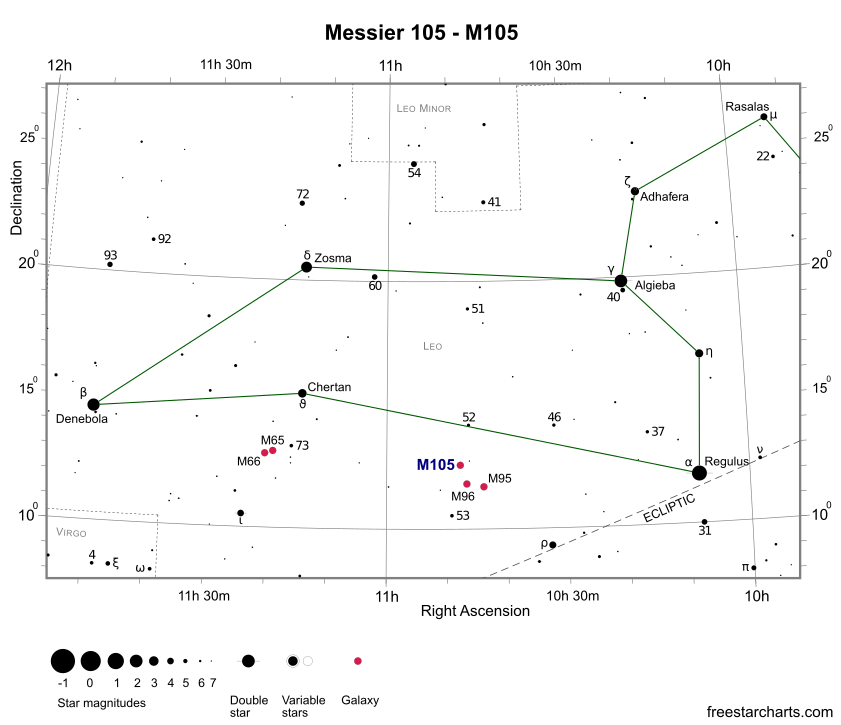M105, mag. +9.8, is an elliptical galaxy visible with small telescopes that's located in the constellation of Leo. It was discovered by Pierre Méchain on March 24, 1781, which was three days before he discovered M101. However, due to unknown reasons, this galaxy wasn't included in Charles Messier's final published catalogue version. It was eventually added by Helen Sawyer Hogg in 1947, together with M106 and M107. William Herschel independently rediscovered M105 on March 11, 1784.
M105 is the brightest elliptical member of the Leo I or M96 group of galaxies that also includes M95, M96 and at least another 21 fainter members. This grouping is one of many that lie within the Virgo Supercluster. M105 is located 35 million light-years distant and is known to contain a supermassive black hole at its centre.
They are best seen during the months of March, April and May.


Finder Chart for M105 - pdf format (credit:- freestarcharts)
M95, M96 and M105 are found in the southern part of the middle section of Leo. Imagine a line connecting Regulus (α Leo - mag. +1.4) with Denebola (β Leo - mag. +2.1) and M95, M96 and M105 can be found just shy of the halfway point. The northernmost member of the trio is M105 with M96 located 50 arc minutes south of M105 and M95 positioned 40 arc minutes west of M96.
Since only 10th magnitude in brightness, M105 is a very challenging 7x50 or 10x50 binocular object. It's easier to spot with large binoculars or small scopes, appearing as a small faint diffuse round patch of light. Medium size 200mm (8-inch) reflectors fair better, with the galaxy appearing brighter and larger but without detail. It's visually unimpressive when compared to other spirals in Leo, although it does have a high surface brightness. However, regardless of aperture, little detail is discernible in M105. In total, it spans about 5 arc minutes.
For owners of large scopes, visible in the same field of view as M105 are fainter galaxies NGC 3384 (mag. +10.9) and NGC 3389 (mag. +12.4). These three galaxies form a compact triangle. Spotting NGC 3389 requires at least a 250mm (10-inch) reflector.
M105 has an actual diameter of 54,000 light-years and is estimated to contain 40 billion stars.
M105 Data Table
| Messier | 105 |
|---|---|
| NGC | 3379 |
| Object Type | Elliptical galaxy |
| Classification | E1 |
| Constellation | Leo |
| Distance (light-years) | 35 Million |
| Apparent Mag. | +9.8 |
| RA (J2000) | 10h 47m 50s |
| DEC (J2000) | +12d 34m 53s |
| Apparent Size (arc mins) | 5.3 x 4.8 |
| Radius (light-years) | 27,000 |
| Number of Stars | 40 Billion |
| Notable Feature | Member of the Leo I or M96 group of galaxies |